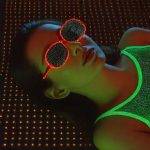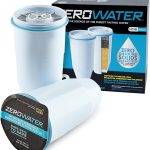
Imagine a world where capturing a moment goes beyond a simple 2D snapshot. Picture yourself pulling out your smartphone, aiming it at a beautiful sunset, and taking a 3D photo that captures not just the colors but also the depth, texture, and even the light spectrum. Sounds like something straight out of a sci-fi movie, right? But thanks to Spec-NeRF, a cutting-edge technology discussed in a recent scientific paper, this futuristic vision is closer to reality than you might think.
What is Spec-NeRF?
First things first — let’s break down what Spec-NeRF actually stands for. The term “NeRF” is an acronym for “Neural Radiance Fields,” a type of computer-generated field that models how light interacts with 3D environments. “Spec” refers to “spectral,” which means this technology is capable of capturing information across different wavelengths of light. So, Spec-NeRF is all about creating 3D models that not only represent objects in three dimensions but also capture their interaction with light in a super detailed way.
How Does It Work?
Traditionally, creating these sorts of 3D models has been a complicated and expensive process, requiring specialized cameras and other high-tech equipment. Spec-NeRF, however, aims to make it far more accessible. All you need is a regular, run-of-the-mill smartphone equipped with a low-cost trichromatic camera and a couple of color filters you can easily buy online.
Here’s a simplified breakdown of how it works:
- Capture Multiple Images: You take a series of photos of the object or scene you want to model, each time using a different color filter on your smartphone camera.
- Data Crunching: These multiple images are then fed into an algorithm that starts to understand how light interacts with the objects in the photos.
- 3D Modeling: The algorithm uses this understanding to construct a 3D model or “Neural Radiance Field” of the scene.
- Spectral Sensitivity Functions: This is a fancy term to describe how the algorithm understands how different wavelengths of light interact with the scene. It’s what gives the 3D model its incredibly detailed and lifelike quality.
Why Is This a Big Deal?
Imagine sharing a 3D image of your weekend hiking trip with friends. They could “walk around” the mountain trail you captured, see the rocks and foliage in full 3D, and even get a sense of the sunlight filtering through the trees — all from their own devices! That’s the level of immersion we’re talking about here.
But the implications go far beyond just super-cool photos. This technology has the potential to revolutionize fields like virtual reality (VR) and augmented reality (AR). Right now, one of the hurdles to creating convincing VR and AR experiences is the difficulty and expense of creating high-quality 3D environments. Spec-NeRF could make it not only possible but also easy and cheap. Imagine playing a VR game that uses real-world locations captured using this technology, or an AR app that lets you place lifelike 3D objects into your own room.
What’s the Catch?
As groundbreaking as Spec-NeRF is, it’s worth noting that the technology is still in its research stage. The scientists behind the paper have demonstrated its feasibility and effectiveness, but there are challenges to overcome before it can become a standard feature on your smartphone. For instance, the algorithms involved are complex and require a fair amount of computational power. This means that as of now, the process isn’t instantaneous — you can’t just snap a 3D photo as quickly as a regular one.
Also, the technology currently requires multiple images taken with different filters to create a single 3D model. This makes it less suitable for capturing fast-moving objects or scenes. However, as smartphones become more powerful and the algorithms get more efficient, these limitations are likely to be overcome.
The Future is 3D
Spec-NeRF is a glimpse into a future where our interaction with digital media becomes more immersive and lifelike. As this technology matures, it’s not hard to imagine a world where 3D photos become as commonplace as the 2D ones we take today. So, the next time you pull out your phone to capture a moment, consider that you might soon be capturing a whole lot more.
Welcome to @Disruptive Concepts — your crystal ball into the future of technology. 🚀 Subscribe for new insight videos every Saturday!







